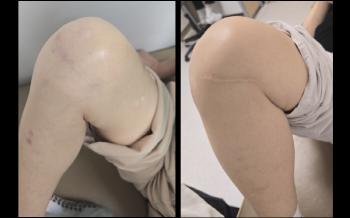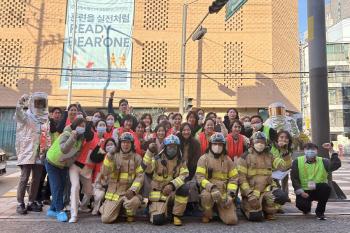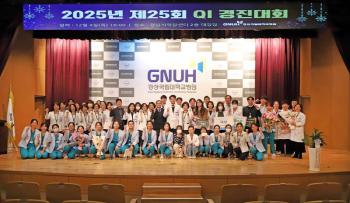Quiet time bomb abdominal aortic aneurysm triples in 13 years...Most patients are in their 70s and 80s
|
Professor Cho Sung-shin's team at Gangdong Kyunghee University Hospital analyzed the increase in the number of abdominal aortic aneurysms using national data from 2010 to 2022, and said the expansion of stent procedures (EVAR) may have contributed to the survival rate of some patients. The study was published in the July 2025 issue of the International Journal of SCI(E) published by MDPI.
◇More deadly in case of rupture 'Quiet time bomb'
Abdominal Aortic Aneurysm (AAA) is a disease in which part of the aorta, the largest blood vessel in the stomach, weakens and swells like a balloon. If the aorta ruptures, it can lead to massive bleeding and loss of life, so it is called a 'quiet time bomb'. The main causes are smoking, hypertension, hyperlipidemia, and arteriosclerosis, which weakens the blood vessel wall, especially in older men. Even if you have a family history, the risk is high.
Most of the abdominal aortic aneurysms have no symptoms, but if the size increases, abdominal, back, and back pain may appear. A typical suspicious sign is the feeling of a thumping heartbeat in the abdomen. However, since most of these symptoms appear just before rupture or have already progressed, it is difficult to diagnose early with symptoms alone. Above all, preemptive detection through regular checkups is important.
◇The number of domestic patients has more than tripled, with most of the elderly patients
Professor Cho Sung-shin's team analyzed the number of patients, surgery methods, and mortality trends using the National Health Insurance Corporation claims data and the National Statistical Office's death cause data for 13 years from 2010 to 2022.
As a result, the number of patients with abdominal aortic aneurysms more than tripled from about 4000 to 13,000. Among them, most of the patients with non-destructive aortic aneurysms found before rupture accounted for, and it increased significantly during the same period. Abdominal aortic aneurysm is a typical senile vascular disease that occurs when the arterial wall is weakened and stretched due to aging. As a result of the study, the number of actual patients was the highest in their 70s, and it was constantly increasing in the elderly over 80. The prevalence rate is expected to increase further as we enter a super-aged society.
◇ Diffusion of stent procedures with small incision range and fast recovery
Surgical treatment to replace or reinforce damaged blood vessels using artificial blood vessels is necessary for the fundamental treatment of abdominal aortic aneurysm. Traditional open surgery (OAR) cuts the weakened aorta area directly by incision in the stomach and seals the artificial blood vessels. Although it has the advantage of high long-term stability due to its wide surgical field of view, it can be burdensome for elderly patients or patients with systemic diseases due to its wide range of incision and long recovery time.
On the other hand, the stent procedure (EVAR) is a method of inserting an artificial blood vessel connected with a stent through a groin blood vessel, which has the advantage of having a small incision range and fast recovery. Due to the advantage of being able to perform it relatively freely even for elderly patients, the frequency of procedures has increased significantly over the past 10 years.
◇Diffusion of stent procedures reduces the mortality rate of non-destructive aortic aneurysm patients
During the study period, the number of stent procedures increased by 2.68 times, outpacing laparotomy since 2011. During the same period, the annual mortality rate of patients with non-destructive aortic aneurysms also decreased by nearly half from 1.4% to 0.7%.
This shows the possibility that the stenting procedure contributed to the improvement of survival in patients with non-destructive aortic aneurysm in actual clinical practice.
The number of stent procedures also increased among elderly patients over 80 years of age, more than doubling from 14.5% in 2010 to 30.8% in 2022. Professor Cho Sung-shin confirmed the possibility that the proliferation of stent procedures was associated with improved survival in patients with non-destructive aortic aneurysms"As an aging society continues, prospective studies should be followed to verify causality based on research results."," he said.
◇'before rupture' diagnosis is key to aortic aneurysm prevention
However, the mortality rate of patients with already ruptured blood vessels remained unchanged at about 35% level during the same period. It shows that it is difficult to increase the survival rate after it has already ruptured, suggesting that early detection and systematic treatment plans by specialists are of paramount importance. For early detection, it is essential to undergo regular checkups in the elderly or high-risk groups. It can be confirmed relatively simply through an abdominal ultrasound examination. In particular, preemptive diagnosis and treatment are the key to protecting life because detection and treatment before rupture can reduce the risk of death by nearly half.
Prevention by improving lifestyle is also important. In particular, smoking causes arteriosclerosis and acts as a major cause of aortic aneurysm, so smoking cessation is essential, and regular management of chronic diseases such as hypertension and hyperlipidemia also helps reduce the risk.
|
This article was translated by Naver AI translator.





